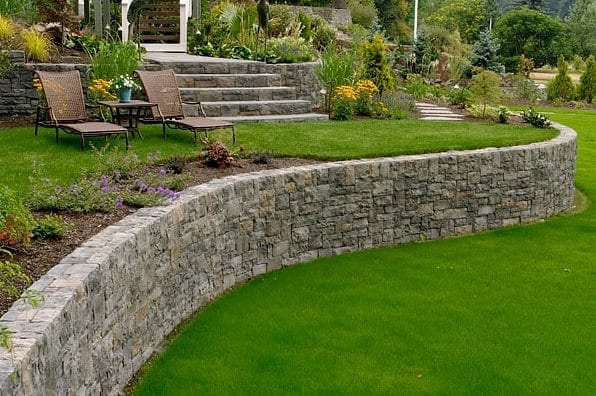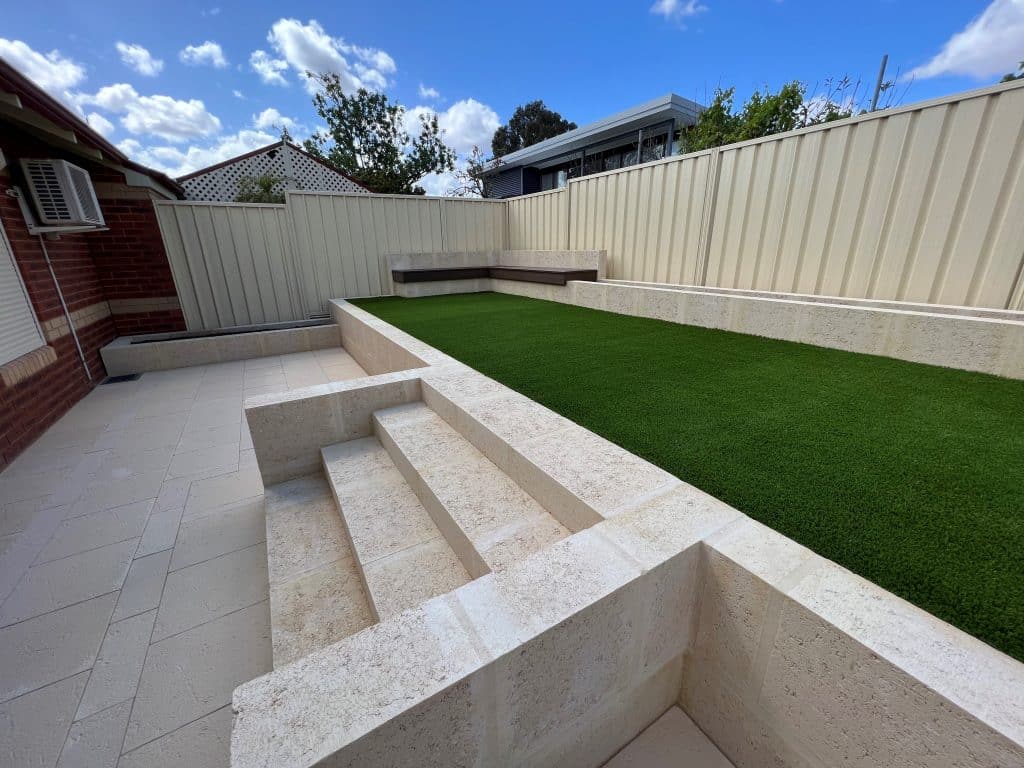The Ultimate Overview to Keeping Retaining Walls Sunshine Coast
The Ultimate Overview to Keeping Retaining Walls Sunshine Coast
Blog Article
Enhancing Property Stability: The Function of Retaining Walls in Soil Retention and Disintegration Control
In the world of property management, preserving stability and protecting against erosion are paramount concerns for homeowner and developers alike. Keeping walls stand as silent guardians, playing a critical role in soil retention and erosion control. Their significance extends past mere structural support, influencing the general honesty and longevity of a home. By checking out the nuances of different types, design factors to consider, building and construction strategies, and upkeep ideas related to preserving walls, a much deeper understanding of their crucial duty in boosting residential or commercial property stability emerges. The elaborate dance in between design expertise and environmental harmony introduces a compelling narrative that underscores the indispensable nature of retaining walls in modern-day land management.
Value of Retaining Walls in Stability
The relevance of maintaining walls in ensuring stability within landscapes can not be overemphasized. Keeping wall surfaces play an important duty in keeping back soil, stopping disintegration, and creating level surfaces in sloped locations. By giving structural support, keeping wall surfaces assist to redistribute lateral pressure triggered by soil, avoiding landslides and slippage. In enhancement to enhancing the aesthetic appeal of a property, maintaining walls add to the overall security and capability of exterior areas.
Preserving wall surfaces are especially crucial in unequal or uneven terrains where dirt disintegration is an usual occurrence. Without sufficient support, dirt disintegration can bring about the deterioration of landscapes, jeopardizing the stability of frameworks and posturing risks to inhabitants. Keeping walls function as barriers, stabilizing the soil and stopping it from moving downhill during hefty rains or other environmental stressors.
Furthermore, keeping walls supply lasting benefits by decreasing upkeep expenses related to soil disintegration and land instability. By investing in well-designed keeping walls, homeowner can guarantee the long life and sustainability of their landscapes while promoting a visually appealing and safe environment.

Kinds Of Retaining Walls for Disintegration Control
Generally made use of in landscape design and civil engineering jobs, numerous types of retaining wall surfaces work as effective services for erosion control in varied surface problems. Gravity keeping walls are sturdy frameworks that depend on their weight to withstand the stress of the soil behind them. They are appropriate for reduced to medium elevation applications and are generally constructed from concrete or stone. Cantilever preserving walls, on the various other hand, are designed with a thicker base and use a bar arm to endure the dirt pressure. These walls are commonly utilized in locations where space is restricted.
For taller wall surfaces or where space is a constraint, anchored retaining walls are often employed. When choosing the suitable kind of maintaining wall for disintegration control, aspects such as soil structure, wall surface elevation, and website problems must be meticulously considered to ensure long-lasting security and performance.
Style Factors To Consider for Soil Retention
The height and place of the retaining wall surface are critical aspects that affect the overall style. Designers should likewise take into consideration the stress exerted by the maintained dirt and potential side lots to ensure the structure's security over time.
In addition, the material choice for the keeping wall surface is critical in enhancing longevity and performance. Concrete, hardwood, gabion baskets, and all-natural stone prevail products used in keeping wall building and construction, each with its distinct advantages and factors to consider. Appropriate water drainage mechanisms, such as weep holes and French drains pipes, should be integrated right into the style to avoid water build-up behind the wall, which can bring about structural failure and disintegration.
Construction Techniques for Maintaining Wall Surfaces
When applying layout considerations for effective soil retention, the construction methods for retaining walls play a vital duty in making certain architectural honesty and lasting security. The success of a maintaining wall surface mainly depends upon the building methods utilized. One usual technique is the gravity wall surface, which counts on the weight and mass of the wall surface itself to resist the stress of the preserved soil. Gravity wall surfaces are ideal for reduced to tool heights and are reasonably easy to construct. Retaining Walls Sunshine Coast.
Another commonly used building and construction strategy is the cantilevered wall, which makes use of a concrete piece structure that prolongs in reverse into the maintained dirt. This layout gives additional stability and appropriates for medium to high preserving walls. For taller frameworks, reinforced dirt strategies such as using geogrids or dirt nails can be utilized to boost the wall's toughness and security.

Upkeep Tips for Residential Property Security
To guarantee lasting residential or commercial property stability, routine upkeep techniques are crucial for preserving the stability of stopping and keeping walls erosion concerns. Evaluating preserving wall surfaces regularly is critical to determine any indicators of damages, such as splits, protruding, or leaning. Any kind of concerns need to be addressed promptly to stop further deterioration. Cleaning up the surface area of the preserving wall surfaces can additionally aid preserve their architectural stability by removing this website dirt, particles, and plant life that can damage the wall surface in time (Retaining Walls Sunshine Coast).
In addition to aesthetic examinations and cleansing, it is essential to check the water drainage systems connected with the preserving wall surfaces. Making sure that drains are free from obstructions and working correctly can protect against water buildup behind the walls, which can result in stress and possible failure. Properly working drain systems are essential for taking care of water circulation and reducing the threat of erosion.
Routinely monitoring and keeping keeping walls pop over to this web-site according to these tips can prolong their life-span and add to the total security of the residential or commercial property.
Conclusion
In final thought, maintaining walls play an important duty in enhancing home security by protecting against dirt erosion and keeping soil in area. Normal upkeep of preserving walls is important to ensure lasting security and defense versus disintegration.
For taller wall surfaces or where room is a constraint, anchored preserving wall surfaces are typically utilized. These walls make use of cable televisions or strips that are secured right into the soil or rock behind the wall to supply added support. When choosing the proper type of preserving wall surface for disintegration control, variables such as soil structure, wall surface height, and website problems must be very about his carefully taken into consideration to make sure lasting security and efficiency.
One typical technique is the gravity wall, which relies on the weight and mass of the wall itself to stand up to the stress of the retained soil. Cleaning up the surface area of the retaining walls can additionally assist preserve their architectural integrity by getting rid of dirt, particles, and plants that can damage the wall over time.
Report this page